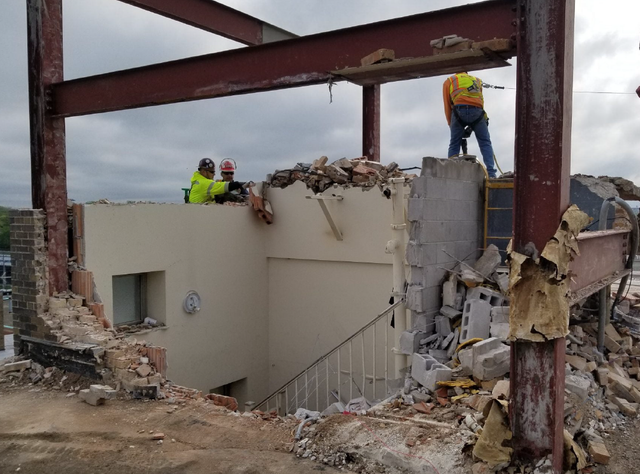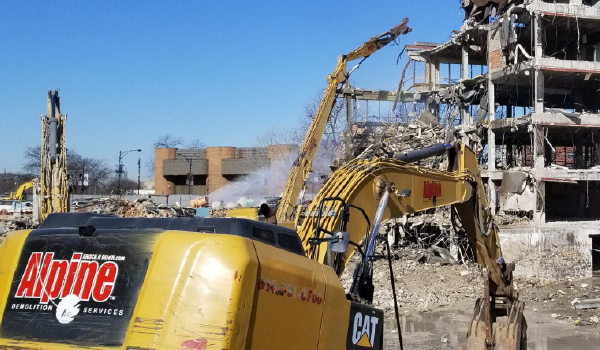Efficient Interior Demolition Techniques for Renovation Projects
Wiki Article
The Ultimate Overview to Inside Demolition Techniques and Devices
Within the realm of interior remodellings, the art of demolition is an essential phase that needs accuracy, ability, and the right collection of devices. Whether you are a skilled specialist or a do it yourself fanatic, recognizing the details of indoor demolition strategies can make all the distinction in achieving a successful project outcome. As we navigate via the subtleties of this thorough guide, we will uncover important tools, precaution, and expert strategies that are indispensable when embarking on the journey of changing an area. Remain tuned to find the vital insights that can raise your demolition prowess to new heights.Important Indoor Demolition Devices
When embarking on interior demolition tasks, having the suitable devices is necessary for effectiveness and safety and security. One of one of the most important devices for interior demolition is the demolition hammer. This heavy-duty device is designed to appear tough products like ceramic tile, drywall, and concrete. Its effective hammering activity can rapidly knock down walls, floorings, and other structures. In addition, a crowbar is essential for getting rid of fixtures, trim, and other products. Its leverage enables for the very easy extraction of nails and various other fasteners without damaging the surrounding surface areas - interior demolition.Another crucial device is a reciprocating saw, which is perfect for cutting with a range of products such as wood, plastic, and metal. Its capacity to make precise cuts in tight spaces makes it suitable for demolition job. An utility knife is required for cutting products like rug, plastic flooring, and insulation. Its sharp blade ensures precise and clean cuts, promoting the elimination of undesirable products. Generally, having these important interior demolition tools will considerably enhance the efficiency and safety of any demolition project.

Safety And Security Preventative Measures Throughout Demolition

Furthermore, all workers involved in the demolition process must get sufficient training on the appropriate handling of tools and tools to decrease mishaps. It is necessary to protect the workplace by setting up barriers and indicators to avoid unauthorized accessibility - interior demolition. On a regular basis checking and preserving tools and devices can likewise add to a more secure working atmosphere. By adhering to these safety preventative measures, indoor demolition projects can be executed effectively while prioritizing the health of all individuals entailed.
Techniques for Getting Rid Of Walls
Implementing correct safety preventative measures during indoor demolition tasks is vital for creating a safe working atmosphere, and one crucial aspect of such jobs entails understanding techniques for eliminating wall surfaces. One typically utilized approach is hand-operated demolition, which requires the use of standard hand devices such as sledgehammers, crowbars, and utility knives to meticulously dismantle the wall piece by piece. This strategy permits greater control over the demolition process, particularly in fragile areas where precision is vital.For bigger, extra complex walls, her comment is here mechanical demolition may be needed. This entails making use of hefty machinery like excavators or excavators to tear down walls efficiently. Nevertheless, it is important to make certain that the architectural honesty of the structure is not endangered throughout mechanical demolition.
An additional method for getting rid of wall surfaces is deconstruction, where the wall surface is dismantled in a means that preserves reusable materials. This sustainable strategy is eco-friendly and can also help in reducing disposal prices. Whichever strategy is employed, it is important to comply with proper safety and security methods and think about the structural implications of wall removal to make sure a successful interior demolition project.
Removing Floor Covering Like a Pro
Successfully eliminating flooring throughout indoor demolition calls for the correct devices and techniques to ensure a effective and smooth process. The first action in removing floor covering is to remove the area of any kind of furnishings or obstacles. Next off, determine the sort of flooring to establish the ideal removal technique. For wood or laminate floor covering, begin by eliminating the baseboards and after that use a floor covering scrape to lift and detach the planks. Rug removal entails cutting the carpeting right into manageable areas and rolling it up for disposal. For tile or plastic flooring, a carve or floor scraper can be utilized to tear up the ceramic tiles or sheets. It's vital to use protective gear such as gloves, goggles, and a mask to avoid injuries and exposure to dirt and debris. In addition, having a dumpster or designated disposal location ready for the gotten rid of flooring materials is crucial for preserving a tidy work atmosphere. By following these strategies and utilizing the right tools, getting rid of flooring like a pro can be accomplished successfully and effectively.Correct Waste Disposal Techniques
After efficiently getting rid of floor covering using the proper tools and strategies, the following important step in the click to investigate indoor demolition process is executing proper image source waste disposal approaches. Appropriate waste disposal is necessary for preserving a risk-free and clean job environment throughout and after demolition.

Contractors should comply with neighborhood regulations concerning waste disposal to prevent penalties and fines. Using specialist waste monitoring solutions can enhance the disposal procedure and make certain conformity with ecological standards. By applying correct garbage disposal approaches, indoor demolition jobs can be completed efficiently and sustainably.
Conclusion
To conclude, interior demolition requires making use of essential devices and rigorous security precautions to ensure a effective and risk-free procedure. Methods for eliminating walls and floor covering have to be done meticulously and successfully to stay clear of any type of damages or accidents. Proper waste disposal methods are additionally vital to preserve a well organized and clean work location. By following these standards, interior demolition can be finished properly and with very little threats.
One of the most essential devices for interior demolition is the demolition hammer (interior demolition). Generally, having these crucial interior demolition devices will considerably boost the efficiency and safety and security of any demolition task
Efficiently eliminating floor covering during indoor demolition requires the appropriate devices and techniques to make sure a smooth and effective procedure.After efficiently removing floor covering using the ideal tools and methods, the following crucial step in the indoor demolition procedure is executing appropriate waste disposal approaches.In verdict, interior demolition needs the usage of crucial tools and strict security preventative measures to ensure a successful and risk-free procedure.
Report this wiki page